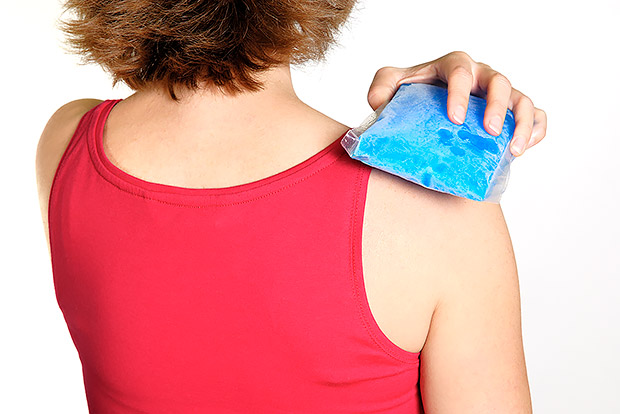
Muscle soreness can occur when you try a new activity, increase your exercise intensity, or perform eccentric exercises (such as running downhill or lowering a weight). Soreness sets in about 12 to 48 hours after the activity, but it should decrease within a few days. Muscle soreness is a normal part of improving fitness, but there are a few ways you can reduce it.
Ice vs. Heat
The National Institutes of Health recommends icing sore muscles for the first 24 to 72 hours to reduce pain and swelling. To make it more comfortable, use indirect ice such as an ice pack wrapped in a towel. After this time period, heat can be applied to increase blood flow and soothe the muscle.
Light Activity
It’s best to reduce your intensity for 1 to 2 days after feeling muscle soreness, but light activity may reduce pain and stiffness. One study found that yoga training reduced muscle soreness in women after a workout involving eccentric exercises. Also, try using a foam roller. Much like a sports massage, they increase blood flow and soothe tight muscles.
Over-the-Counter Medications
Pain relievers, such as acetaminophen or ibuprofen, can help reduce pain and swelling. Be sure to take the pills only as directed and avoid relying on them for your pain relief. Use these medications only after activity, once muscle soreness has begun. Taking them before or during exercise may hide pain, which can increase your risk of injury.
Healthy Eating
Adding more antioxidant-rich foods to your diet can reduce inflammation. Research shows that tart cherries have anti-inflammatory compounds that act as natural painkillers. Ginger contains gingerols that have been found to ease muscle soreness.
Stretching
Research does not support the popular belief that stretching before exercise will reduce muscle soreness. It is better to focus on a warm-up with repetitive movement that prepares the muscle for more intense activity and save stretching for after your workout.



 5 Ways to Burn 300 Calories this Weekend
5 Ways to Burn 300 Calories this Weekend
 The Best Home and Garden Chores for Burning Calories
The Best Home and Garden Chores for Burning Calories
 5 Tips for Making Exercise a Habit
5 Tips for Making Exercise a Habit
 Best Ways to Stay Safe during Exercise in Hot Weather
Best Ways to Stay Safe during Exercise in Hot Weather
 11 Tips for Exercise Motivation
11 Tips for Exercise Motivation
 Signs You Need to Increase Exercise Intensity
Signs You Need to Increase Exercise Intensity
 Mistakes to Avoid When Setting Fitness Goals
Mistakes to Avoid When Setting Fitness Goals
 Essential Gear for Starting an Exercise Program
Essential Gear for Starting an Exercise Program

 Pinterest
Pinterest RSS Feed
RSS Feed